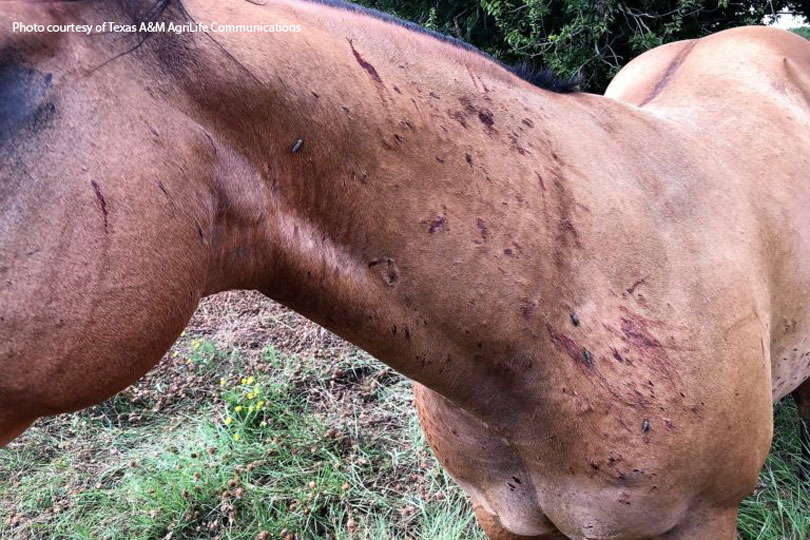By Justin Walker
Communications Specialist
Horse flies have been a major problem for Texas livestock this year, according to a Texas A&M AgriLife Extension Service expert.
Reports of horse fly infestations have been flying into Dr. Sonja Swiger’s office more than ever before in her 11-year career as an AgriLife Extension entomologist in Stephenville.
“It’s the worst year I’ve ever seen,” Swiger said. “We don’t have much data on seasonal horse fly populations to compare, but we can speculate that all the rain we’ve had the last few years has created the right environmental conditions for higher horse fly numbers.”
The increase in numbers has made controlling the flies difficult, Swiger said.
Temperatures have risen to levels inhospitable for the biting fly, she said, but late summer or early fall rains could help the pest return.
While horses are a common target for the horse fly, the pest is not host specific, Swiger said. Human and other animal hosts are at risk of bites, as well.
Unlike a mosquito’s bite, a horse fly will cut the host to access the blood, consuming it as it drops from the wound to help with egg production.
Horse flies are typically found in shaded areas such as tree lines, Swiger said. However, females—the only horse flies that bite—will wonder to search for a host once a day.
Eggs are often laid over winter and in early spring, she said. They are usually found in shady, semi-aquatic and moist areas, such as the edges of ponds or water tanks.
“They can be in any number of locations, and that makes them hard to treat effectively,” Swigger said. “The larvae are maggots, but they look like maggots on steroids. They are also very predacious and will feed on each other.”
Click here for more information, including options to control horse flies.

